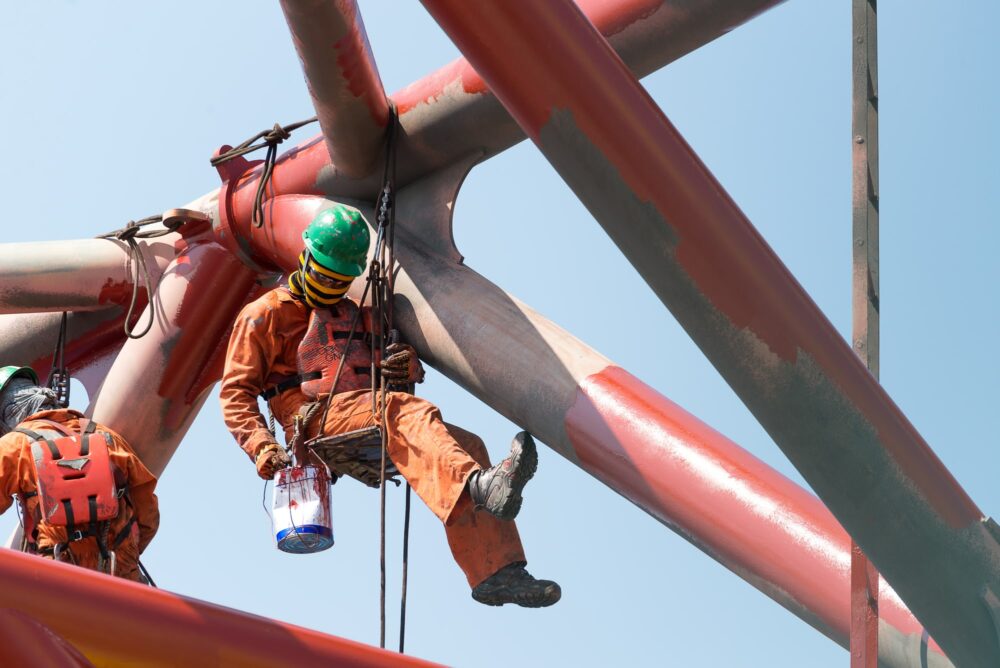Falls from a height are the second most common cause of construction site injuries. Companies have a legal and moral responsibility to ensure that preventative measures are put into place, and employees are aware of the risks which working in construction can bring. Here are our tips on how to work safely at a height.

1. Carry out a risk assessment.
Prior to carrying out work at a height, the law requires a risk assessment to complete. Under the Management of Health and Safety at Work Regulations Act (1999), employers must consider objects or scenarios which may cause an injury or illness and the probability of such causing harm.
Based on this assessment, the employer should then decide on an appropriate plan of action to prevent injury and illness from occurring in the workplace.
The outcome should be that work at a height is a stand-alone risk and should have protocols in place which ensure the work is carried out and supervised in the correct and safe manner.
2. Ensure staff are appropriately trained.
Before employees can work from a height, they must undergo sufficient training so they can carry out self-risk assessments and take the correct precautions to remain safe. From an employee’s perspective, it is highly recommended that individuals hold an official certification through a scheme such as the CSCS. This is not only required by a vast number of employers but is beneficial to the laborer themselves.
3. Use your tools safely.
An often-under-looked element of working at heights is the risk of falling objects. It is important to consistently remain alert of yourself and your surroundings when using tools. Retractable tool lanyards act as a plan B, as human error is inevitable. A simple slip of the hand could harm another colleague or the tool itself as it falls, yet when a lanyard is in use, it is easy to prevent, thus making them an essential piece of equipment when working from a height.
4. Lift, Ladder, or Scaffold?
Safety equipment is there to assist and protect yourself. Scaffolding and elevating platforms act as excellent preventative measures, whereas falls can be mitigated by nets and personal fall arrest systems. It is therefore important that this equipment is respected and used in the correct manner to ensure utmost safety. For example, there may be scenarios where durable scaffolding may act better than a ladder. Therefore, risk assessments and training are important as employees will know which course of action to take when presented with varying situations.
Working safely at a height is all about vigilance. If you can recognize risk and use your knowledge to work with tools, equipment, and others safely – falls can be easily prevented.

